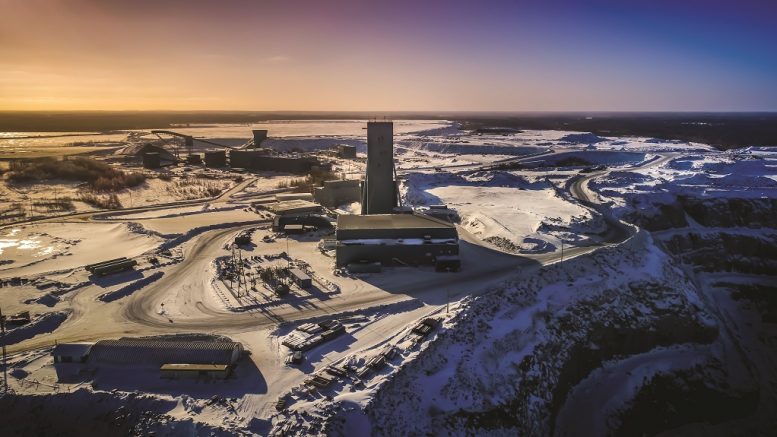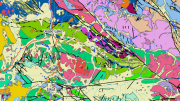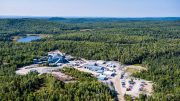Since majority shareholder Brookfield Asset Management (TSX: BAM.A; NYSE: BAM) tapped Jim Gallagher to become president and CEO of North American Palladium (TSX: PDL; US-OTC: PALDF) in August 2015, the street-savvy mining engineer has shepherded the company away from the precipice of bankruptcy, laid to rest NAP’s debt, and put the palladium producer solidly in the black, with enough free cash flow in the recent quarter to raise its dividend to 10¢ per share, from 3¢.
A few more miracles like these, and the suits on Bay Street might take to calling him Saint James.
Other numbers from NAP’s 2019 first quarter at its flagship Lac des Îles mine, near Thunder Bay, Ont., are almost as virtuous.
Revenue increased to $128.3 million, versus $86.6 million in the same period last year — the highest quarterly revenue in the company’s history.
Net income reached $29.5 million, or 50¢ per share — more than a sixfold increase from the 8¢ per share in the corresponding quarter in 2018. Cash flow from operations was almost $76 million, while free cash flow was just shy of $47 million.
What’s more, NAP cleansed its balance sheet of $37 million in remaining debt, a holdover from what Gallagher calls the “dark days.” The only other debt (about $11 million) is tied to equipment leases.
The linchpin of the remarkable turnaround was the shift to sublevel caving introduced by Gallagher and his team in 2016. That action lowered costs and boosted palladium production.

James Gallagher
“We fundamentally changed the underground mining method to sublevel caving. We introduced some fill from surface to bulk up the cave, and that probably saved the operation,” Gallagher said in a recent interview with The Northern Miner. “It has now become very reliable. We’re currently one of the largest and lowest-cost underground mines in Canada.”
NAP mined 607,918 tonnes from underground in the first quarter of 2019, for a year-over-year increase of 38,450 tonnes. Underground costs per tonne decreased slightly to $38 in the recent quarter, versus $39 per tonne for the same period in 2018.
Despite those positive numbers, total tonnes milled slipped nearly 200,000 tonnes from 1,050,384 in the first quarter of 2018, to 851,364 tonnes in the recent quarter.
Correspondingly, total production costs for the first quarter, before cost adjustments, were $63 per tonne milled, compared with $47 per tonne milled in the year-ago period.
Gallagher attributes the increases mostly to higher maintenance costs at Lac des Îles, owing to two conveyor belt snafus and expensive rebuilds of the primary and secondary crushers.
All-in sustaining costs (AISCs) also popped to US$919 per oz. palladium, compared with US$709 per oz. in the first quarter of 2018. The increase was mostly the result of fewer ounces mined, higher sustaining capital because of mine expansion, and increased royalties, due to higher palladium metal prices.
Indeed, NAP’s palladium revenue per ounce averaged US$1,507 per oz., compared with US$1,001 per oz. in the first quarter of 2018. This mostly owes to dramatically higher amounts of palladium used in catalytic converters to burn hotter and catalyze pollutants to meet rising emissions thresholds in major auto markets, such as Europe and China.
Gallagher has set the goal of 12,000 tonnes per day by 2021. Throughput averaged 8,984 tonnes per day in this year’s first quarter, while mill recovery inched higher to 82.4%, versus 79.9% in first-quarter 2018.
NAP’s 2019 production guidance is pegged at 220,000 to 235,000 oz. palladium at AISCs of US$785 to US$815 per ounce.
But as healthy as NAP’s first quarter numbers are, perhaps the most promising news comes from the Sunday Lake project, a greenfields exploration play 60 km south of the mill.
The company spent $6.6 million on exploration in the first quarter, including drilling underground and surface targets at Lac des Îles, and more than 20,000 metres at the Sunday Lake intrusion and “Big Red” target.
Drill hole 19-26 at Sunday Lake returned a 41-metre intersection running 3.22 grams platinum per tonne, 2.08 grams palladium per tonne, 0.21 gram gold per tonne, 0.57% copper and 0.19% nickel, including a 16-metre high-grade section running 5.42 grams platinum, 3.35 grams palladium, 0.34 gram gold, 0.88% copper and 0.24% nickel.
By comparison, the head grade mined at Lac des Îles is 2.6 grams palladium per tonne.
Another highlight is hole 19-29 at Sunday Lake: a 275-metre step-out west of hole 19-26 that cut 32 metres grading 1.89 grams platinum, 1.23 grams palladium, 0.23 gram gold, 0.33% copper and 0.18% nickel.
 A jumbo underground at North American Palladium’s Lac des Iles palladium mine. Credit: North American Palladium.
A jumbo underground at North American Palladium’s Lac des Iles palladium mine. Credit: North American Palladium.
Meanwhile, hole 19-25, one of three follow-up holes to mineralization discovered last year in the central part of the intrusion, intersected 15 metres running 1.33 grams platinum, 0.90 gram palladium, 0.10 gram gold, 0.29% copper and 0.10% nickel.
The results are painting a picture of the extent of mineralization at the base of the Sunday Lake intrusion.
“We optioned [Sunday Lake] from Impala Platinum (US-OTC: IMPUY). They had been exploring in Canada for platinum group metals for more than a decade, but backed away three years ago, due to their own financial challenges. And we’ve had some interesting hits [at Sunday Lake]. We’ve done some modern geophysics, and there’s more to be told on that story. So stay tuned,” Gallagher said.
NAP’s option agreement with Impala and Transition Metals (TSXV: XTM), signed in June 2017, gives NAP the right to earn Impala’s 75% interest in the Sunday Lake project, with Transition keeping a 25% carried interest through to a feasibility study.
NAP must pay $610,000 to Impala and Transition to earn its initial 51% interest in Sunday Lake. Any decision to move to the second stage of the option agreement must be made by Aug. 20, 2019.
The company already has several promising underground exploration targets at Lac des Îles, in addition to 3 million oz. in reserves, or what essentially has been mined to date. Gallagher says that number could increase.
“We used to think we were just dealing with the big Roby zone … but what we have discovered is there’s a number of satellite zones — smaller, cylindrical, vertical. So we have lots of options underground that are actually very close to the mine workings in the shaft,” Gallagher explained.
He added: “We’re very confident we’re going to keep on mining. We have not found the depth extension of the orebody yet, and [that is] really due to a lack of good drilling platforms. And then we have near-surface opportunities, which are potentially open-pittable, within 2 km of the mine site.”
As NAP looks at ways to grow, Brookfield seeks to sell some, if not all, of its 92% equity stake.
NAP recently announced a $75-million, bought-deal financing that will bring Brookfield’s equity position down to 81%.
The catch is that Brookfield can’t move large share blocks into the market without it looking like it’s bailing on the asset, and cratering the share price.
Brookfield provided a $130 million loan to NAP in 2013. But two years later, NAP was in even greater distress. That’s when the loan was converted to the 92% equity stake, and Gallagher ascended to the top job.
“[Brookfield’s] fund that we’re owned in goes and looks for distressed assets, across every segment of the market. And if they believe that there’s value in the asset, they’ll buy in and sponsor a turnaround. Once the turnaround is achieved, then they want to redeploy that capital and move on. So that’s really what’s in play,” Gallagher said. “Over the next couple of years, in a responsible manner, Brookfield wants to sell down and move this into the market.”
At this point, investors will learn if Gallagher stays or moves on to bring another distressed asset back from the dead.
NAP shares trade in a 52-week range of $12.61 to $8.62, with a $732-million market capitalization. At press time NAP shares were trading at $12.50.
— Based in Toronto, Brian Sylvester is a freelance writer specializing in the resource industries.





Be the first to comment on "NAP turnaround at Lac des Îles part mining method, part miracle"